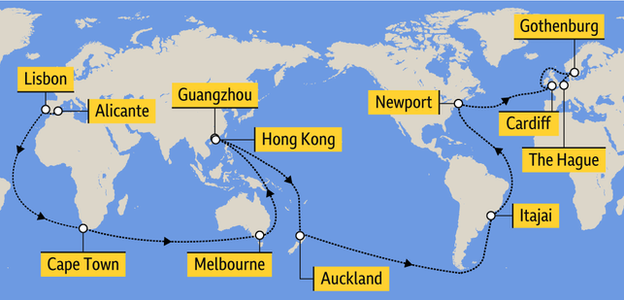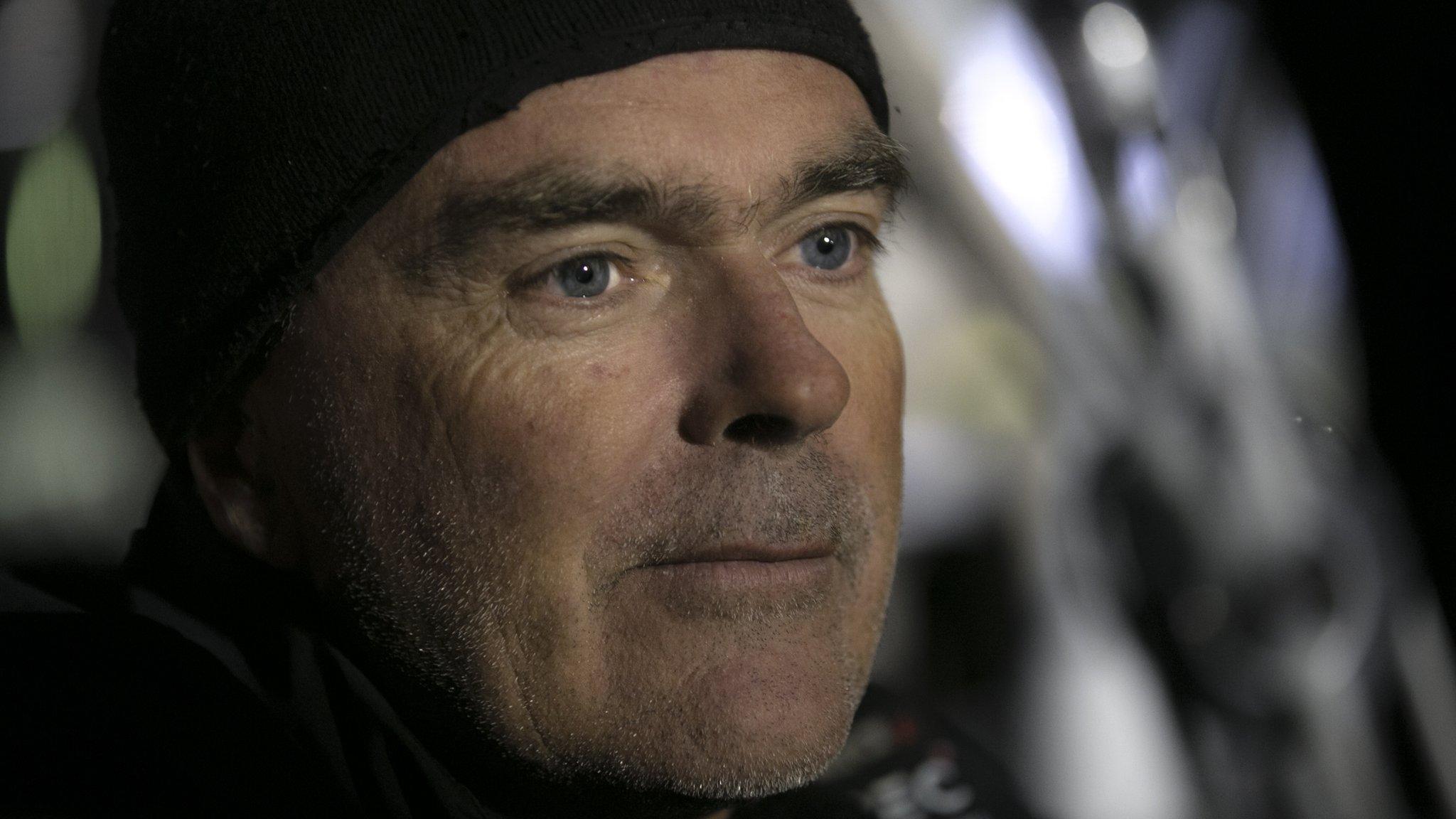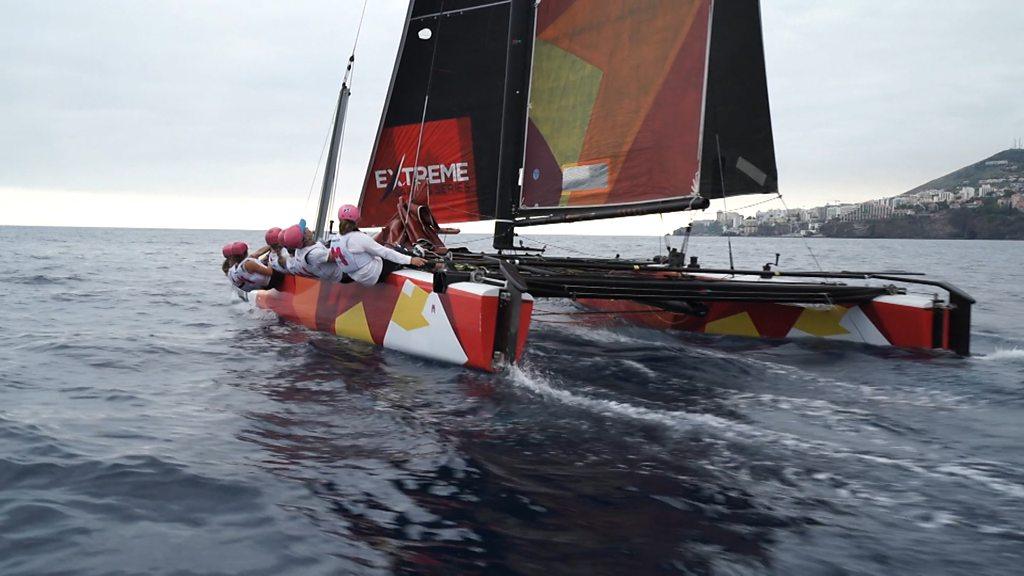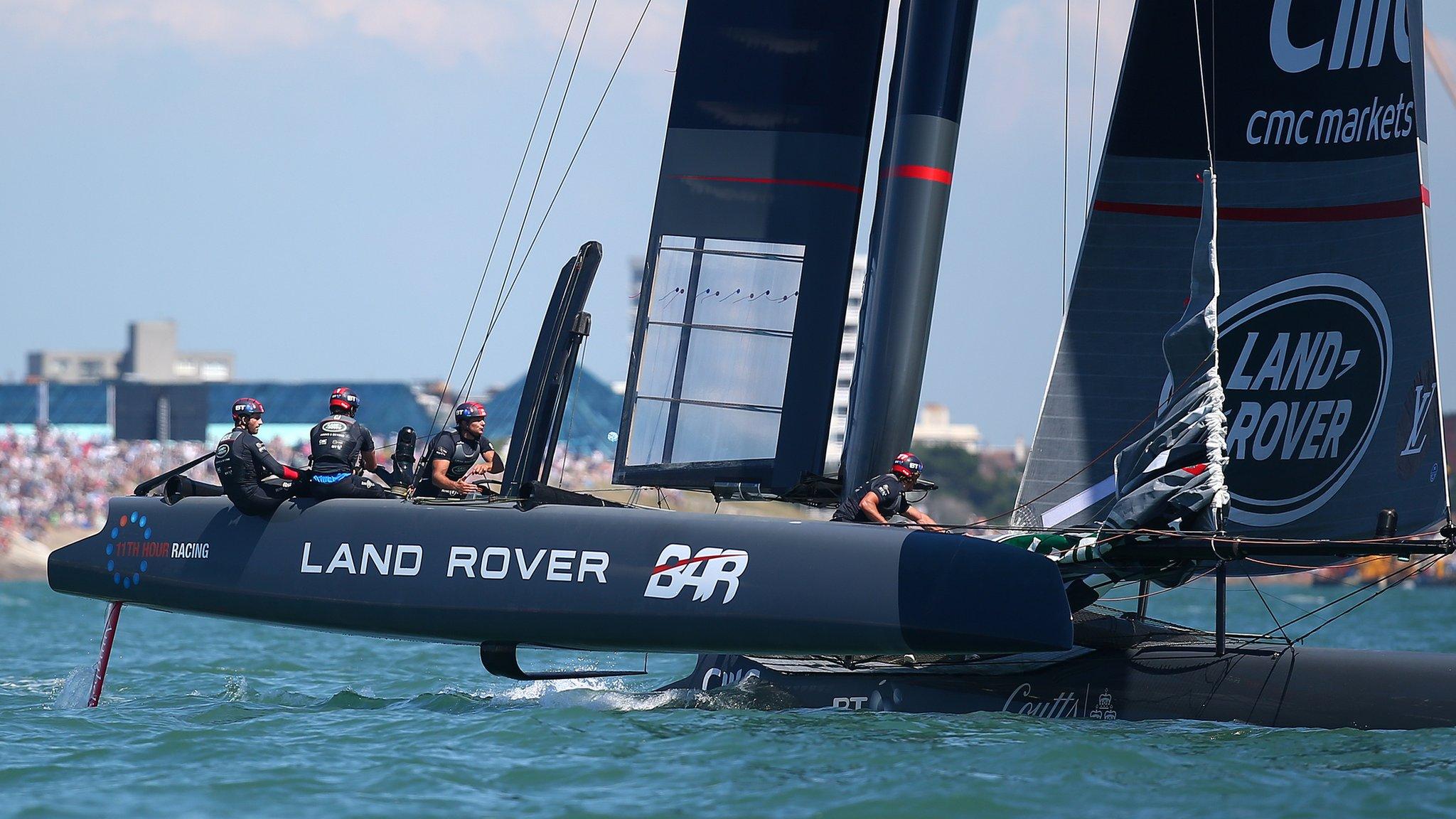Volvo Ocean Race 2017-18: Seven boats, nine months, 45,000 miles
- Published

The race is more than 45,000 nautical miles long and will take the seven crews around nine months to complete
Torn sails, broken masts, capsizes and icebergs - at 45,000 miles, the Volvo Ocean Race is no luxury cruise.
Last time out, Ian Walker - for Abu Dhabi Racing - became the first British skipper to win the race but neither he nor the team will be defending the title.
However, there is still plenty of British interest in the 13th - and longest - edition of a race that first took place in 1973.
Six of the seven boats have at least one Briton on their crew, and - in May next year - Cardiff will become the first British port to host the race since 2006.
But what is the route this time, which teams are competing and who are the Britons involved?
The course
The 2017-18 event starts with an in-port race in Alicante on Saturday, 14 October before the first leg proper starts eight days later.
Four oceans, 12 ports and six continents later, the race finishes in The Hague.
Leg | Start date | Route | Distance (NMs) | Scoring |
|---|---|---|---|---|
1 | 22 Oct | Alicante-Lisbon | 700 | 8-6-5-4-3-2-1 |
2 | 5 Nov | Lisbon-Cape Town | 7,000 | 8-6-5-4-3-2-1 |
3 | 10 Dec | Cape Town-Melbourne | 6,500 | 15-12-10-8-6-4-2 |
4 | 2 Jan | Melbourne-Hong Kong | 6,000 | 8-6-5-4-3-2-1 |
5 | 1 Feb | Hong Kong-Guangzhou | 100 | 1pt for completing stage |
6 | 7 Feb | Hong Kong-Auckland | 6,100 | 8-6-5-4-3-2-1 |
7 | 18 Mar | Auckland-Itajai | 7,600 | 15-12-10-8-6-4-2* |
8 | 22 Apr | Itajai-Newport (USA) | 5,700 | 8-6-5-4-3-2-1 |
9 | 20 May | Newport (USA)-Cardiff | 3,300 | 15-12-10-8-6-4-2 |
10 | 10 Jun | Cardiff-Gothenburg | 1,300 | 8-6-5-4-3-2-1 |
11 | 21 Jun | Gothenburg-The Hague | 700 | 8-6-5-4-3-2-1 |
* The first boat to round Cape Horn on this leg wins an extra point.
The boat with the fastest overall time wins an extra point.

Gothenburg will be the teams' final port of call before the last stage to The Hague
Tactics to the fore... | |
|---|---|
This is the second edition of the race featuring the single-hull Volvo 65 design, brought in to ensure crewing and tactics, rather than design and technology, are pushed to the forefront. |
The teams
While Walker and Abu Dhabi Racing are not defending their titles, the other three teams to finish in the top four of the last race return.
Boat | Country | Skipper (nationality) |
|---|---|---|
AkzoNobel | Netherlands | TBC |
Dongfeng | China | Charles Caudrelier (Fra) |
Mapfre | Spain | Xabi Fernandez (Spa) |
Vestas 11th Hour | USA/Denmark | Charlie Enright (US) |
Sun Hung Kai/Scallywag | Hong Kong | David Witt (Aus) |
Turn The Tide On Plastic | United Nations | Dee Caffari (GB) |
Brunel | Netherlands | Bouwe Bekking (Ned) |
The Britons
Name | Role | Team |
|---|---|---|
Dee Caffari | Skipper | Clean Seas |
Rob Greenhalgh | Watch captain | Mapfre |
Neal McDonald | Performance manager | Mapfre |
Simon Fisher | Navigator | Vestas |
Steve Hayles | Navigator | Scallywag |
Jules Salter | Navigator | AkzoNobel |
John Fisher | Crew | Scallywag |
Bleddyn Mon | Crew | Clean Seas |
Henry Bomby | Crew | Clean Seas |
Abby Ehler | Crew | Brunel |
Hannah Diamond | Crew | Vestas |
Annie Lush | Trimmer | Brunel |
The history
1973: Three competitors die on the second leg of the race from Cape Town to Sydney.
1977: Briton Clare Francis becomes the race's first female skipper.
1981: The crew of Vivanapoli are arrested after the boat is halted by an Angolan gunboat 150 miles off the coast of Africa. They are released only after a week of negotiations.
1985: Duran Duran star Simon Le Bon's yacht Drum has an eventful race. Having lost her keel and capsized during a trial run in the Fastnet Race, minutes after the final leg of the Ocean Race, customs officials with sniffer dogs board Drum to see if the crew have brought in illegal substances from Uruguay.
1989-90: Briton Tracy Edwards skippers the race's first all-female crew.
2005-06: Movistar beat ABN Amro One by just nine seconds - roughly equating to 80 metres - on the 1,400-mile third leg. It is the closest finish in the race's history.
2014-15: Cyclone Pam forces the fleet to restart a day later than planned from Auckland, with winds of over 200mph (320kph) causing chaos.
- Published14 October 2017

- Published25 June 2017

- Published26 May 2017
